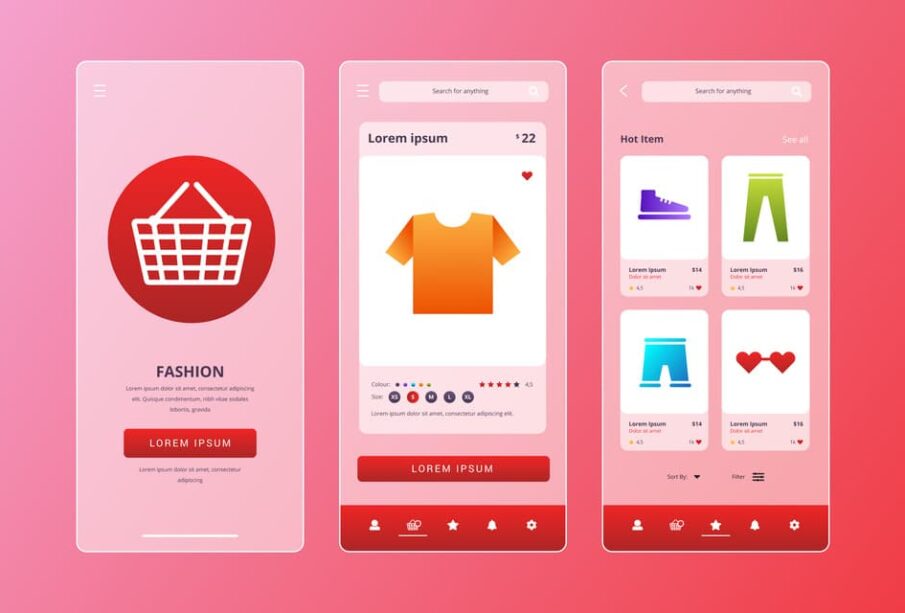UI/UX Design for E-Commerce Websites: Best Practices and Strategies

In the competitive landscape of e-commerce, where user experience can make or break a sale, UI/UX design plays a critical role. A well-designed e-commerce website not only attracts visitors but also guides them seamlessly through the shopping journey, ultimately leading to increased conversions and customer satisfaction. In this blog post, we’ll explore the best practices and strategies for UI/UX design in e-commerce, focusing on key areas such as navigation, product discovery, checkout process, and mobile optimization.
- Intuitive Navigation and Site Structure
The foundation of a successful e-commerce website lies in its navigation and site structure. Users should be able to find what they’re looking for quickly and easily. Implementing a clear and intuitive navigation menu with logical categories and subcategories is essential. Additionally, incorporating search functionality with auto-suggestions and filters can further enhance the user’s ability to discover products efficiently.
- Visual Hierarchy and Product Presentation
Visual hierarchy plays a crucial role in guiding users’ attention and highlighting important information. On e-commerce websites, products should be presented in a visually appealing manner, with high-quality images, clear product titles, and concise descriptions. Utilizing techniques such as grid layouts, prominent call-to-action buttons, and strategically placed product recommendations can help users navigate and explore products effortlessly.
- Streamlined Checkout Process
The checkout process is a critical point in the user journey, where friction can lead to cart abandonment. Designing a streamlined checkout process with minimal steps and distractions is paramount. Implementing features such as guest checkout, saved payment methods, progress indicators, and shipping cost estimations can simplify the checkout experience and reduce friction points, ultimately increasing conversion rates.
- Mobile Optimization and Responsive Design
With the increasing prevalence of mobile shopping, optimizing e-commerce websites for mobile devices is no longer optional. Responsive design ensures that the website adapts seamlessly to various screen sizes and devices, providing a consistent user experience across desktops, tablets, and smartphones. Mobile optimization involves optimizing page load times, implementing mobile-friendly navigation, and designing touch-friendly elements to enhance usability on smaller screens.
- Personalization and Recommendation Engines
Personalization plays a significant role in enhancing the user experience and driving sales in e-commerce. By leveraging user data and behavior analytics, e-commerce websites can deliver personalized product recommendations, tailored content, and targeted promotions to individual users. Implementing recommendation engines based on past purchases, browsing history, and demographic information can help users discover relevant products and improve engagement and conversion rates.
- Trust and Security Features
Building trust is essential for converting visitors into customers, especially in e-commerce where financial transactions are involved. Incorporating trust signals such as security badges, SSL encryption, customer reviews, and easy-to-find contact information instills confidence in users and reassures them of the website’s credibility. Additionally, providing transparent information about shipping, return policies, and customer support channels helps build trust and reduces hesitation during the purchasing process.
- Continuous Testing and Optimization
UI/UX design is an iterative process that requires continuous testing and optimization to ensure optimal performance and user satisfaction. Conducting usability testing, A/B testing, and gathering feedback from real users can help identify areas for improvement and refine the user experience over time. Monitoring key performance indicators such as conversion rates, bounce rates, and average order value allows e-commerce businesses to measure the impact of design changes and make data-driven decisions to optimize the website further.
Conclusion
In conclusion, UI/UX design plays a crucial role in the success of e-commerce websites by providing users with an intuitive, engaging, and seamless shopping experience. By implementing best practices and strategies such as intuitive navigation, visual hierarchy, streamlined checkout process, mobile optimization, personalization, trust features, and continuous testing, e-commerce businesses can create websites that not only attract visitors but also convert them into loyal customers. Investing in UI/UX design is essential for staying competitive in the ever-evolving e-commerce landscape and delivering exceptional user experiences that drive growth and success.











